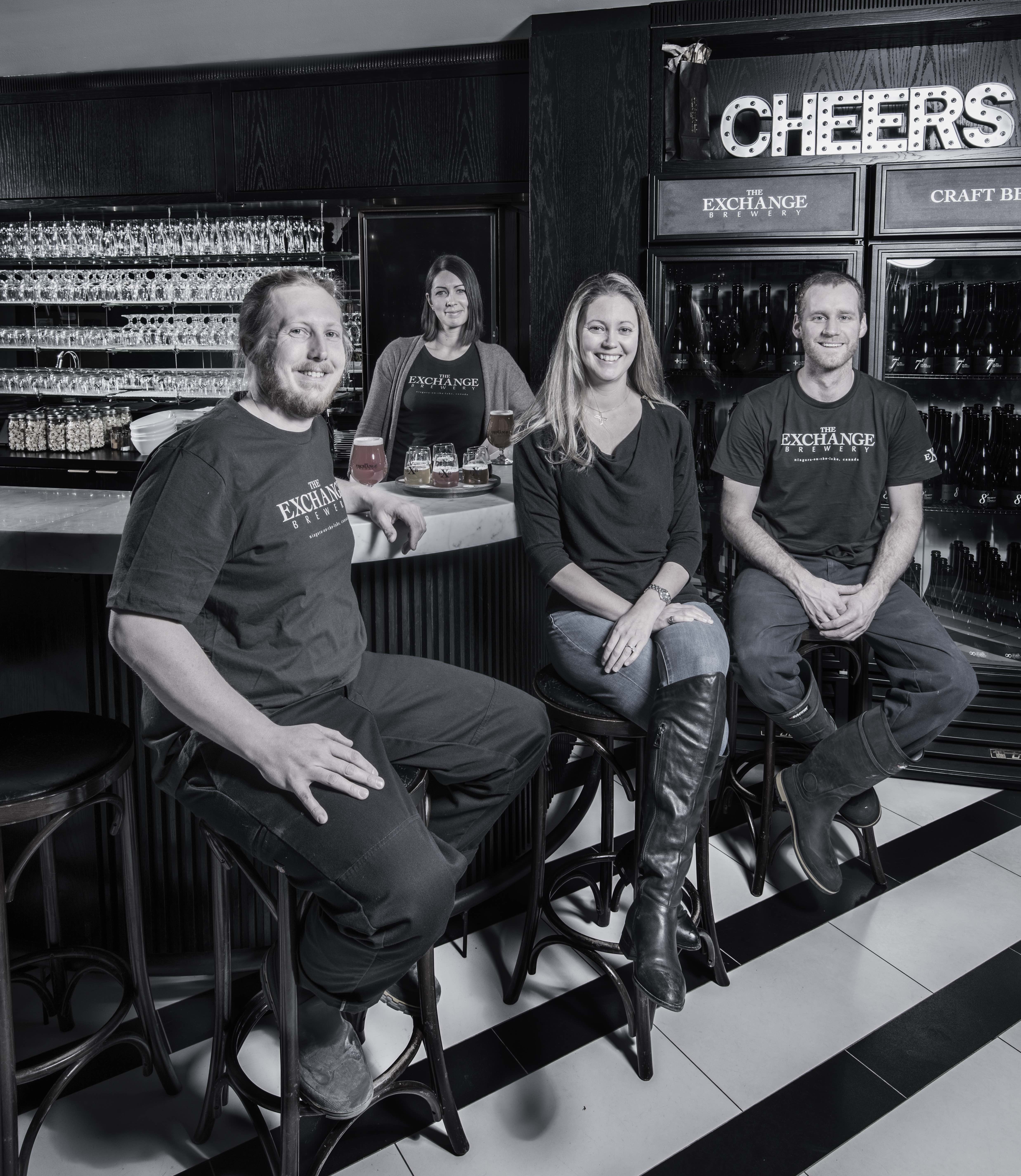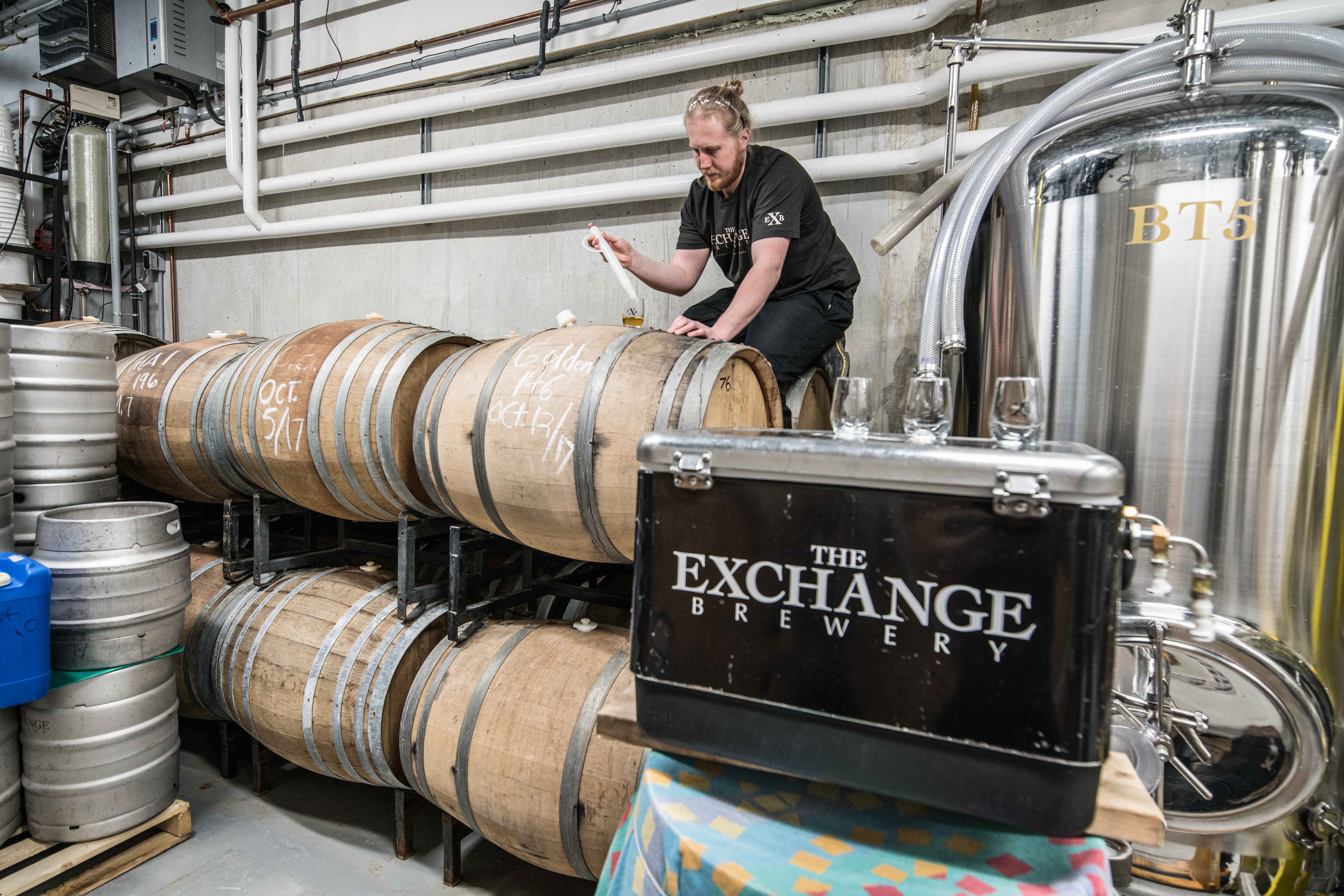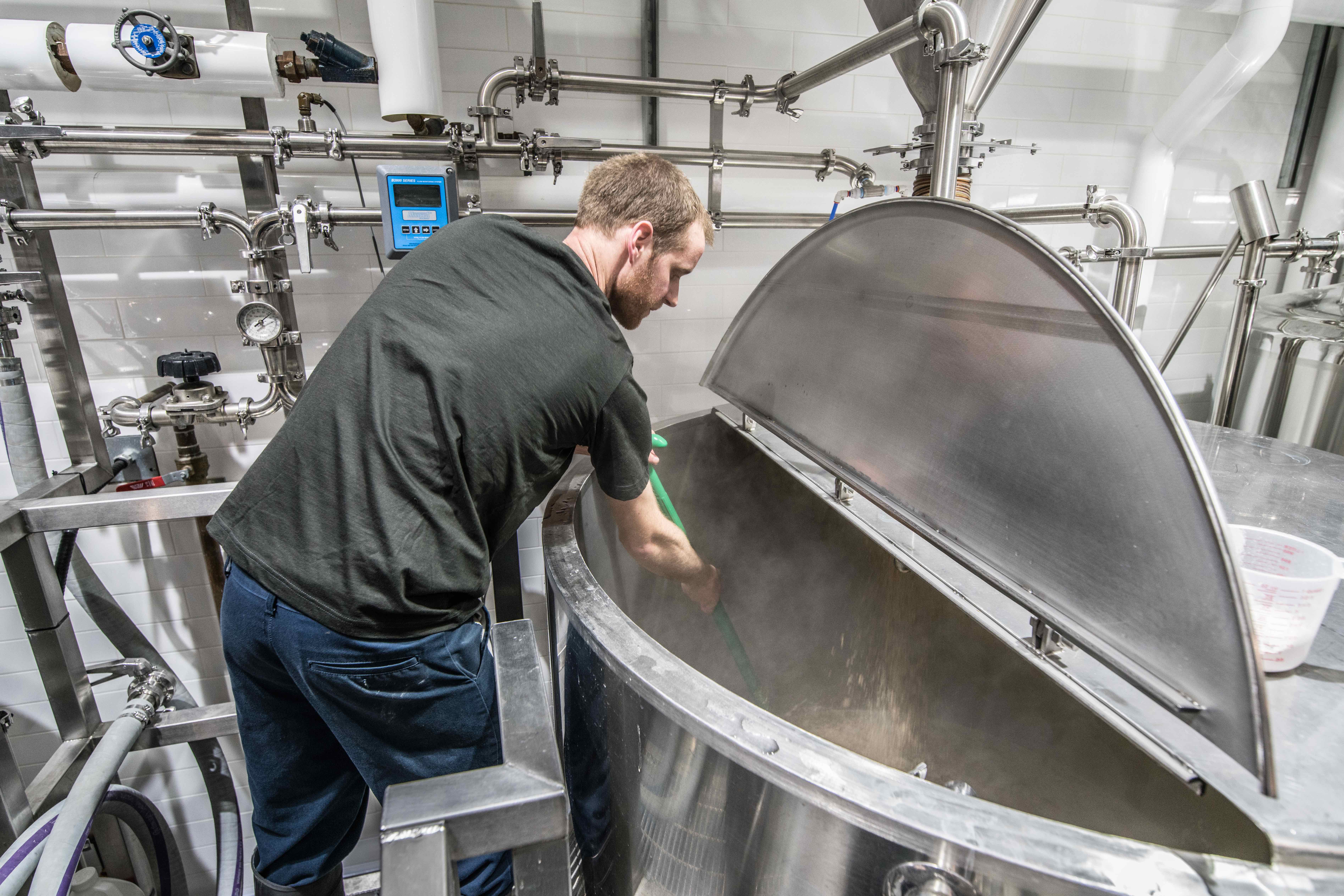
California’s Russian River Brewing Company is one of those rare finds. A brewery, so often revered for its Pliny the Elder and Pliny the Younger IPAs but one that is also treasured for its barrel-aged output. Be that a strong dark ale aged in Cabernet Sauvignon barrels, or a sour aged in Pinot barrels, the level of adulation received by Vinnie and Natalie Cilurzo’s brewery towards its diverse range remains the same.
And any brewer would know the time, skill and art that’s required to nail one type of beer. But to be respected globally for even more than that? That takes some beating.
It’s hardly surprising then to see so many great breweries in their own right having taken inspiration from the good work the Cilurzos and their team have been doing in Santa Rosa these past decades.
“When we started, we set out with the idea of being the Russian River of the north,” proclaims Robin Ridesic, founder and CEO of Niagara-on-the-Lake’s The Exchange Brewery. “They were a massive inspiration. To be as awesome as you are at West Coast IPAs as you are sour beers is a real skill. They know what drinkers want and we wanted to do the same here in Canada.”
And now, two years young, the Queen Street-based brewery can take pride that it’s offering local drinkers just that. Variety across styles but most importantly, underpinned by quality.
The Exchange is a brewery and tasting room located in Niagara-on-the-Lake’s Old Town heritage district. While the town is known as the heart of Ontario’s wine country, it is also the scene of a burgeoning craft-brewing industry. And as The Exchange grows and evolves, Ridesic along with head brewer Sam Maxbauer are excited about the flourishing scene they are part of.
“We’d love more breweries in our area. In my opinion, the more the better. If we can become something of a destination for people that enjoy great beer, then that is only a good thing,” Maxbauer explains. “If more breweries pop up, then we will aim to support them because let’s be honest, Ontario is growing but it’s still a fair bit behind lots of the US. “There is so much potential to work together for everyone’s benefit.”

It’s a sentiment shared by Ridesic who, after the first two years trading, is comfortable with the brewery’s position and is looking forward to what the future holds.
“We’re starting to grow as a business. We’ve passed those initial growing pains and now have that confidence to look ahead, plot where we’re going and where we want to be,” she says.
Ridesic is a former home brewer who was hit with that inescapable lightbulb moment while she was living in the US. The moment that said “You should open a brewery”.
“It was an idea I fell in love with,” she explains. “It was in the mid 2000s and I was trying all of these fantastic IPAs and boundary-pushing sour beers. But you’d look to Ontario at that time and for the most part, it was all bland lager controlled by the Labatts and Molsons of the world.”
At a similar time, family happened. Marriage followed by the birth of her first child placed the brakes on opening a brewery. Then the birth of a second child followed but for Ridesic, this didn’t slow her plans further but instead was the catalyst to push on and pursue her dream.
“My love for sour beers made it important for me to start with someone that knows their stuff from the off. I posted the job everywhere but for the most part, people that know their sours are held onto very, very closely,” she laughs.
But a can-do attitude lead Ridesic to taking a direct approach.
“I called up Jolly Pumpkin Artisanal Ales (the well-regarded Dexter, Michigan-based sour beer producer) and spoke to Sean Brennan, who was their lead brewer at the time. And I asked him if he’d like a take a new opportunity and come work with us!” says Ridesic.
New beginnings
Brennan, now at Diageo, politely declined but said he knew someone that might be interested. That was his colleague Sam Maxbauer and thankfully for Ridesic, he was ready to up sticks, grasp the challenge and go on that new adventure some 500km east.
“Of course, it was a difficult decision to make the move. But I’m happy I did!” he says. “It was a new experience for me and the be involved in a brewery from the very formative stages, building it from the ground-up, was something I always wanted to so.”

Maxbauer adds: “I learned an awful lot from my time at Jolly Pumpkin, especially with the expansion they were going through. I was managing the brewing, managing the cellar, taking samples from barrels and ensuring things were tasting good and progressing as they should. But ask any brewer and to be given free rein is something they’d dream of. To start my own sour programme is what interested me, to not have established brands but instead be responsible for establishing them was very liberating.”
Ridesic ensued that Maxbauer was fully-involved when The Exchange Brewery was still at an idea stage. And like many successful breweries, that was a key move in ensuring the operation started life as smoothly as possible, and continued that way.
“It was so important to have Sam involved before we even started production. If he was to oversee the brewing side of the business then it was essential he influenced the flow, design and feel of the brewhouse. We wanted what he wanted!” she explains.
Ridesic notes that brewery’s Queen St facility offers a sufficient production space but also one that’s on the tight side, so working closely with Californias Criveller Group on the commission on the 10bbl brewhouse was integral. The brewhouse is complemented by five double-sized fermenters and eight serving vessels running that run straight to its draft lines.
“It needed to be nimble, but well-designed. And it is both of those,” she says.
From the off, the company’s mission statement has been to focus on making exceptional craft beers using only the highest quality ingredients, such as local Niagara fruits. Its selection includes a range of American styles along with sour and funky Belgian-style beers and ales.
A cursory glance at recent beers the brewery have available include its Golden Ale. Dry with a light fruity nose. This beer, the company says. may be the cross-over point for some wine drinkers. Fermented with its house belgian ale yeast then aged in french oak barrels with brettanomyces.
Elsewhere, its take on a Witbier showcases the collaboration of wheat, spices and yeast. Use of malted and raw wheat give this ale great wheat character and slight haze. Orange peel and coriander play nice with their Belgian house yeast. All aged in Hungarian oak.
On the other side of the beer spectrum, a Session IPA is complement by an 8.5% Double IPA brewed with Amarillo, Centennial and Saaz.
According to Maxbauer, fermentation capacity for such hoppy beers is at a manageable point at present, but its the barrel-aged output that grows and grows. With that, so does the fermentation requirements. Early on the in the life of The Exchange Brewery, it boasted a cellar equipped with two large German-made Hungarian oak Foeders and 50 French oak wine barrels obtained from the Pearl Morissette Winery in Jordan.
Now the team utilises off-site storage that houses 180 wine barrels. Of course, patience is a virtue when it comes to such beers so as the beer portfolio at The Exchange grows, so does the need to increase the ability to enable that. And that means more quality barrels.
“Barrel aged and sour beers will always be our focus,” explains Maxbauer. “Our brewers are all phenomenal and they’re also getting great experience working with the barrels. I think we’ll see the Barrel-Aged programme continue to play a very large part but that doesn’t mean the “hoppy” side of what we do can’t be popular, too.”

He adds: “Having left the US around four years ago, the insatiable appetite for hoppy beers was a strong as ever. But I think that’s somewhat levelling out now and in turn, you’re seeing lots of barrel programmes pop up. Now, if you’re a US brewery without a few barrels out the back then people look at you funny. Here in Ontario, we’re probably 5-10 years behind some of those outfits. But I believe that we’re at the front of Barrel-Aged scene, rather than being at the end of IPA one.”
Changing market
Maxbauer explains that the ongoing popularity of hoppy, hazy beers has kept the brewing team on their toes and it’s inevitable that the brewery responds in kind to what resonates and sells well.
“It’s a case of going with what sells but what we like to drink, too. It needs to be interesting and that is paramount. While we’re small, we want to keep on our toes,” he says.
But just as the team are producing a wide range of pales and IPAs, they’re also exploring 100% Brett fermentation when previously Brett fermentation was often a secondary process in barrel.
“We want to keep people guessing,” he says.
And just as Maxbauer wants brewing to be both proactive and reactive, Ridesic and the team have an eye on the inevitable; new entrants to the market producing sour beers.
“We’re excited about new breweries coming along and doing those types of beers because collectively, we can raise our profiles and with it, the profile of sour beer. But the beer has to be good. We need to avoid a situation where people are looking into barrel programmes for the wrong reasons,” she says.
Ridesic adds: “The worst outcome is to have the market flooded with bad sour beers. All it takes is one, maybe two poor experiences and a customer won’t just write off that brewery, but the wider scene. We need to do our best to educate people, and ensure other brewers are doing all they can to learn their craft and put out the best beer they possibly can.
“We’re all in this together.”
